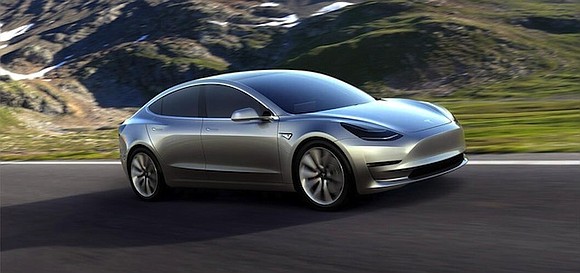Tesla Autopilot update aims to keep drivers' hands on the wheel
CNN/Stylemagazine.com Newswire | 6/18/2018, 11:12 a.m.
Jackie Wattles
(CNN Money) -- Tesla vehicles are about to start warning drivers more often: Keep your hands on the wheel, even if Autopilot is activated.
The electric car startup sent an update to its Autopilot software last weekend.
Tesla's Autopilot feature is not fully autonomous. It only handles some functions, such as helping to keep a car in its lane or braking behind other vehicles. Tesla owner's manuals instruct drivers to keep their "hands on the steering wheel at all times."
An algorithm controls when Tesla vehicles warn their drivers to put their hands on the wheel.
A message can pop up on the dashboard screen and chimes will sound. The notifications are triggered based on a variety of factors — including how fast the car is traveling, where it is in relation to other cars on the road, and how long it's been since the driver's hands were last detected. The warnings can escalate if they are ignored by the driver.
With the latest software update, Tesla drivers will start receiving notifications more frequently, especially if they're driving at high speeds.
The update was reported earlier by Electrek, a blog that tracks developments in the electric vehicle market.
Tesla's Autopilot system has faced criticism. Critics argue the name Autopilot implies that the car is capable of fully autonomous driving, which can lull drivers into a false sense of security.
Tesla vehicles have been involved in fatal crashes during which Autopilot was engaged, but the drivers were not holding the steering wheel in the moments before impact.
One fatal incident occurred in California earlier this year, and it prompted the National Transportation Safety Board to open another probe. A preliminary report that came out last week from the NTSB said the driver's hands were off the steering wheel for six seconds before his Model X collided with a highway barrier.
Tesla and its CEO, Elon Musk, defended the Autopilot feature.
"The consequences of the public not using Autopilot, because of an inaccurate belief that it is less safe, would be extremely severe," Tesla said in a March blog post about the fatal Model X crash.
Tesla has repeatedly referred to a report from the National Highway Traffic Safety Administration about the 2016 Model S crash, which found that activating Autopilot's steering function correlated with a 40% reduction in crash rates. The report has been widely criticized, and NHTSA later said it "did not assess the effectiveness of this technology."
It's unclear if the latest software update was prompted by the most recent crash. Tesla routinely rolls out updates to software, and it's unclear how long this upgrade has been in the works. A Tesla spokesperson declined to comment.
The latest version has already attracted its share of critics who say the car warns drivers too often, which some have referred to as "nagging."
One Twitter user said the "update was a step backwards for [Autopilot] safety. The increased nags made it so I simply didn't use [Autopilot] anymore because even with hands on the wheel it still would nag."
The critique prompted a response from Musk over the weekend: "Sigh. This is crux of matter: can't make system too annoying or people won't use it, negatively affecting safety, but also can't allow people to get too complacent or safety again suffers. Latest update should have a positive effect on latter issue especially."
Another Twitter user wrote that the update "is a pain."
"I now need to white knuckle death grip the wheel to keep away the nags. Don't need to keep my foot on the peddles (sic) with old school cruise control!" the tweet reads.
Tesla steering wheels do not detect the pressure of a driver's grip. Instead, Tesla steering wheels identify hands by "recognizing light resistance as the steering wheel turns, or from you manually turning the steering wheel very lightly," according to a Tesla owner's manual.
Musk said in a tweet that another Autopilot update would change how warnings are worded to be more clear about how the car detects drivers' hands.
"Will be adjusting screen alert to clarify that we mean 'slight up or downward force on the wheel,' not really 'hold the wheel,'" he said.




